This post wraps up my series about full-time RV living in winter by offering several tips to keep the cold at bay. These are simple and very inexpensive things you can do on your own to make winter camping comfortable.
Full-time RV Living in Winter
#1 Weatherstripping – Entry Door
The weatherstripping on my entry door was worn out and needed to be replaced. I double-checked it to see if there were any gaps and if the thickness that was originally installed was adequate. I’ve had a small area where I could see a sliver of daylight when the door was fully closed since I bought my Airstream and the repair shops haven’t been able to fix it.
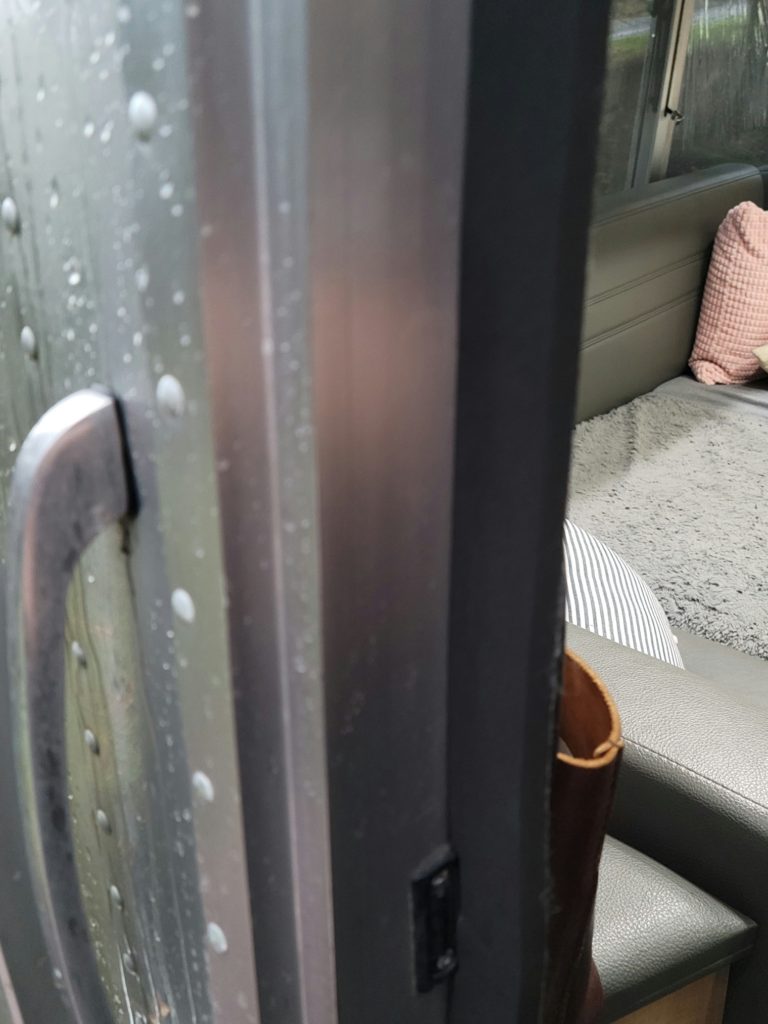
My new weatherstripping is thick, heavy-duty neoprene. It’s a bit too wide for the door frame but it hasn’t been a problem. It’s too thick for the hinge side of the door but thinner weatherstripping fills that gap well. I can no longer see daylight through the gap. I call that a win.
#2 Cover Your Screen Door With Clear Window Insulation.
I covered the screened section on my screen door. I did this thinking it would help with the drafts around the entry door but I also wanted to be able to leave the door open on nicer days without letting all the cold air in. The third reason is that my door is curved and there is no awning above it and that allows rain in when the door is open. This helps keep rain from coming in when I’m letting the dog in and out. I’ve been happy with the results.
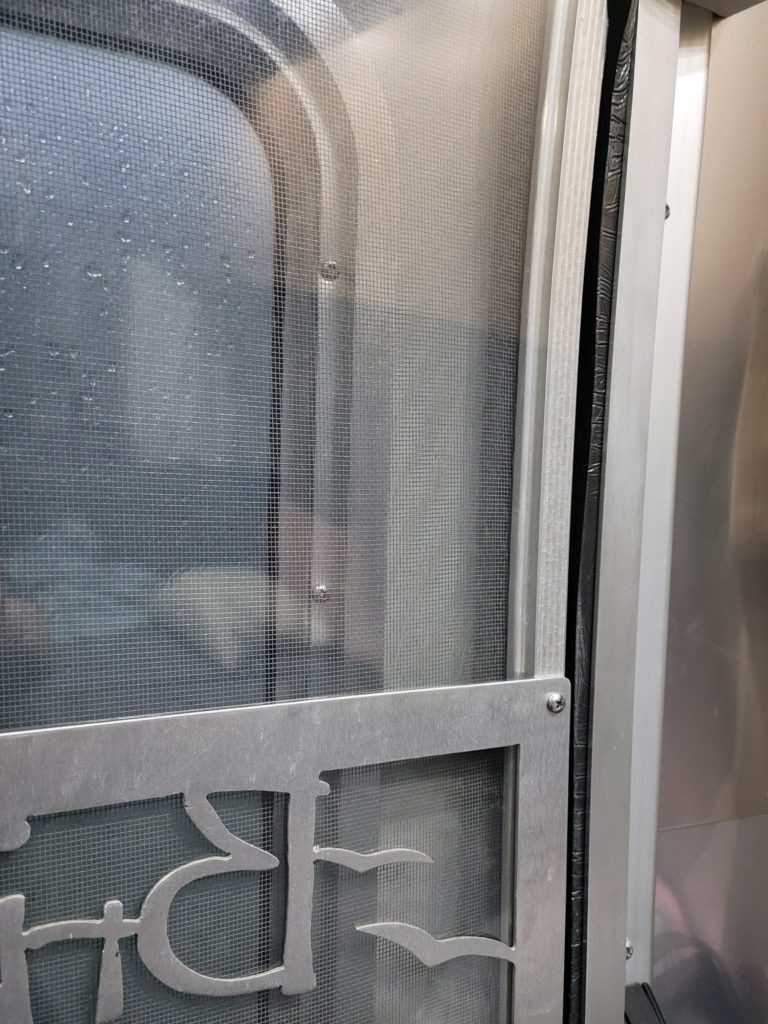
I used a Frost King Window Insulation Kit V93H, 42-Inch by 62-Inch. This is the type you apply to the door or window frame using tape included in the key. Then you use a hairdryer to gently shrink the plastic tight so it’s quite transparent.
To see a demonstration of installation check out this video. How to install the Frost King Shrink Window Insulation Kit
I removed the screen guards from both the top and bottom of the door and applied the plastic. Then I replaced the screen guards. I also applied some weatherstripping where the center sliding cover meets the frame.
#3 Fan Vent Insulation Pillows
A lot of warm or cool air can be lost through those vents we all have in our ceilings. They make a product specifically for that problem. Safoner RV Vent Insulator and Skylight Cover with Reflective Surface. They make these without the reflective surface but when It’s really hot outside, I plan to use them as heat-reflecting insulation.
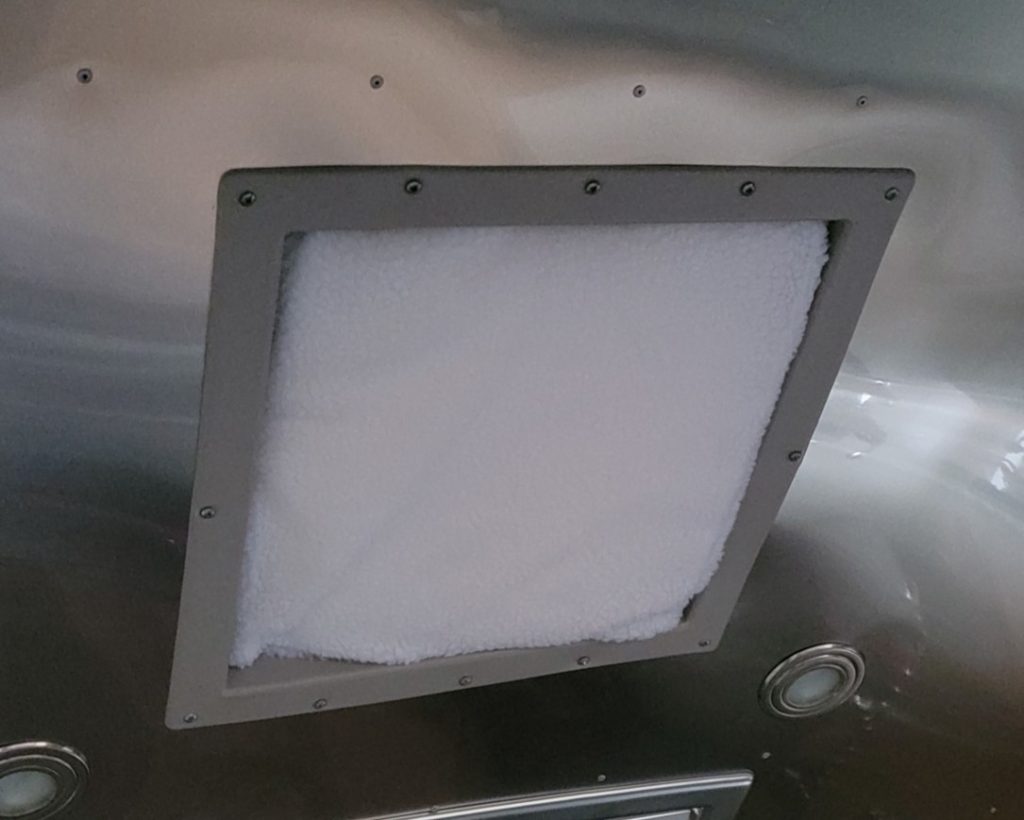
I’ve had these in place for about a month and I can tell the difference. Some of these have removable covers so read the description and get the style you think will work best for your situation.
#4 More Bubble Insulation Applications
I find places where there is an outside opening like around the outdoor shower, freshwater fill door, storage bays, etc. it’s like a draft superhighway. To give a little added protection, I cut pieces of bubble insulation to fit snugly in those places.
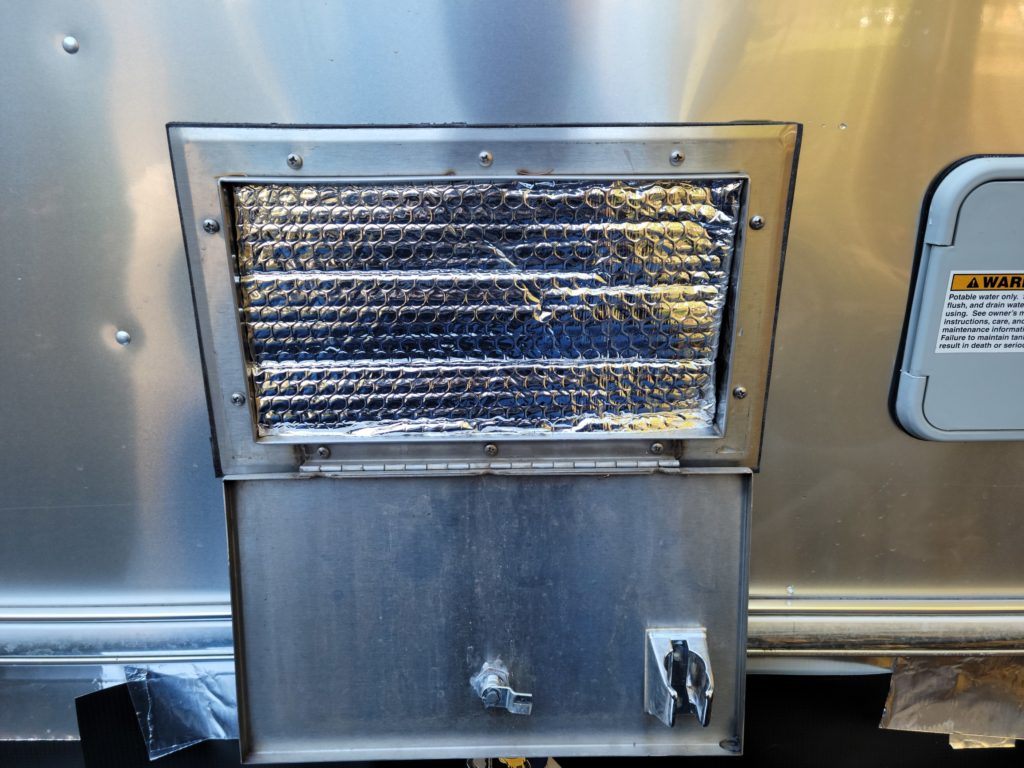
I also lined the front storage bay, which is under the head of my bed, with bubble insulation. The vent for my inverter which is not in use needed to be covered also. You can see that in the far left of the photo below.
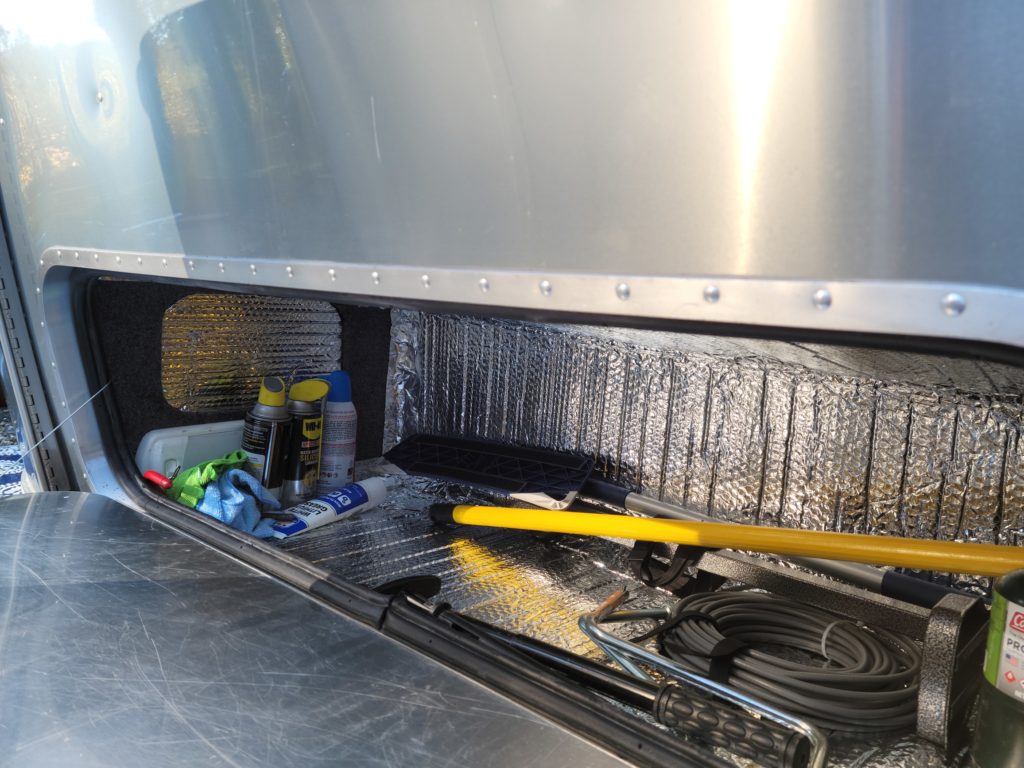
#5 Water Hose Insulation
My brother installed a new water line and spigot closer to the trailer. I have the items I need to insulate the water hose. Now I just need a dry day to put it all together.
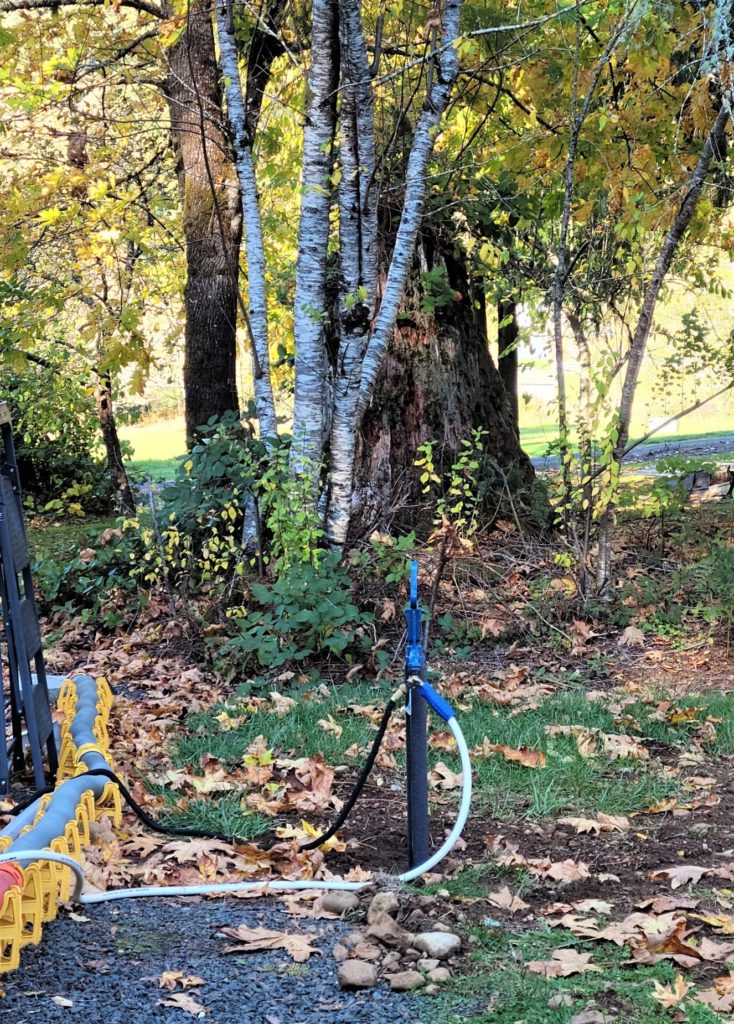
I just can’t bring myself to buy one of those expensive heated hoses. I am going to wrap my water hose with foam pipe insulation, then I’ll run an Automatic Electric Pipe Heating Cable, down the length of the water hose and zip tie it in place. I’ll also run the heating cable up the water pipe and add an insulated cover to the top to keep that part from freezing. The last time I was home during the winter we used this setup and it worked flawlessly.
I am adding some plastic window insulation to some of the interior windows but at this point, I’m unwilling to cover the windows so I can’t see out. It’s so gray here all fall and winter, covering the windows will only make it feel darker in here. There’s a reason Western Washington has such a high rate of Seasonal Affect Disorder (SAD) and a very high suicide rate. I’ll keep whatever natural light I can get.
Leave a comment below with your full-time RV living in winter tips!
Check out my other full-time RV living in winter posts.
- RV Skirting for Winter – How To Skirt Your RV On The Cheap
- Winter RV Living – Creative Ways To Keep Your RV Warmer
Winter RV Living – Creative Ways To Keep Your RV Warmer
RV Skirting for Winter – How To Skirt Your RV On The Cheap
If you like this post, please pin it.
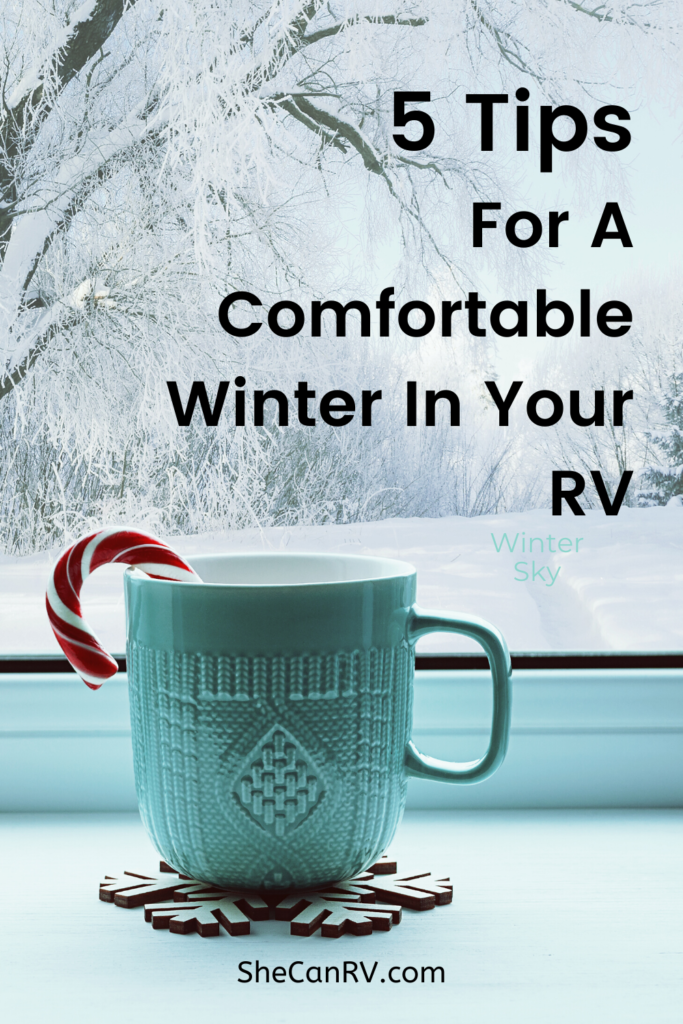
Thanks for the tips! I’m in the process of planning on living in a class B rv when I retire in 2-3 years, and I’ve been doing research on surviving through different seasons, in a budget. I appreciate this post, it is very informative. Thank you and Happy Thanksgiving. Keely
You’re most welcome. Thanks for visiting SheCanRV. It’s challenging here in this wet climate but I’m learning every day and I’ll share those lessons.